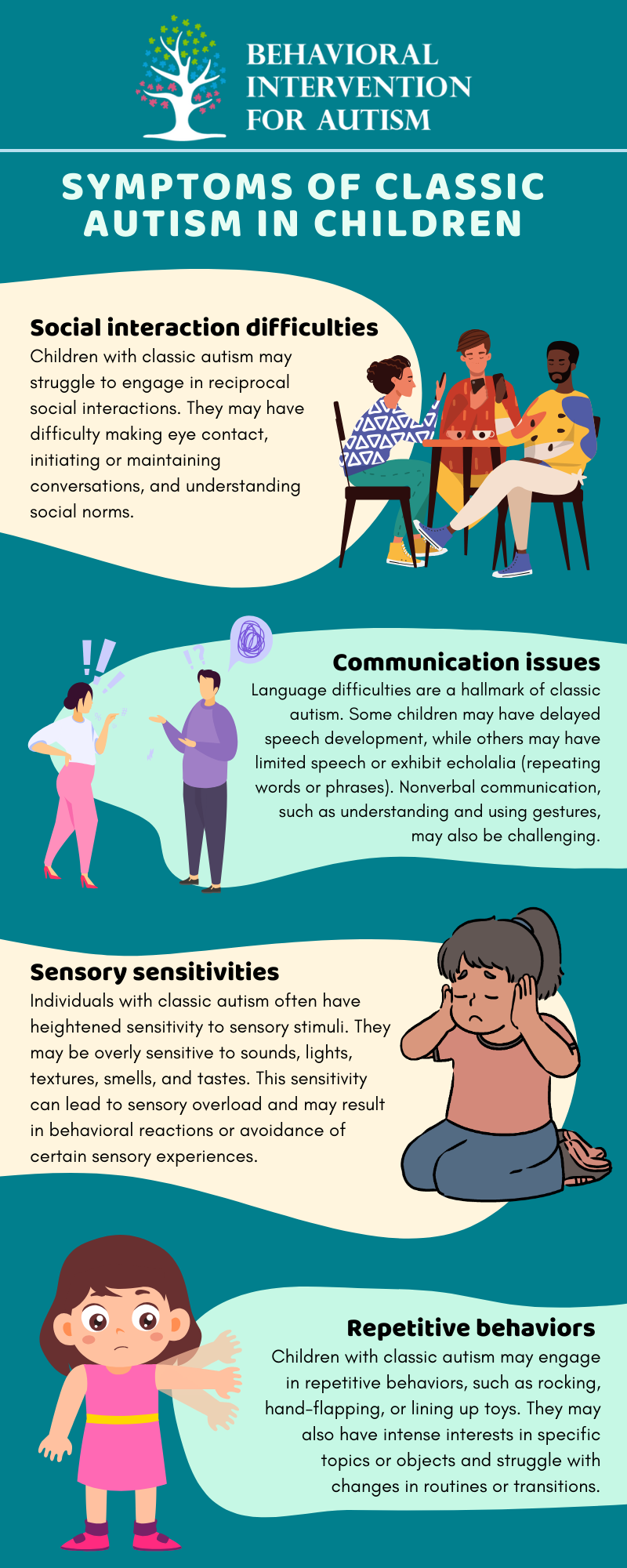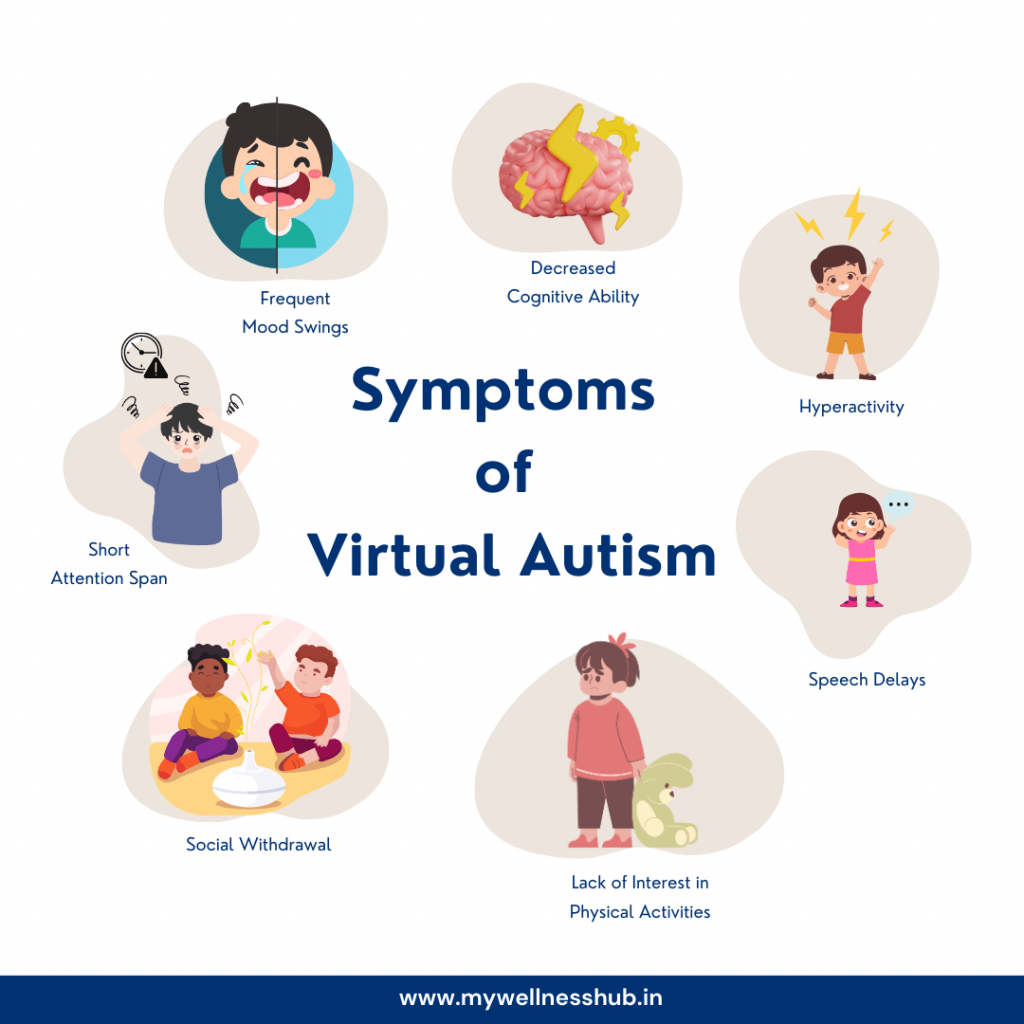Understanding behavioral triggers through Autism Therapist-backed methods
Understanding behavioral triggers through Autism Therapist-backed methods
Blog Article
Understanding the Impact of Behavioral Autism on Daily Life and Social Interactions
You could not realize how deeply behavior autism affects daily life and social communications. Individuals on the spectrum commonly browse a world filled up with communication obstacles and sensory overload. These difficulties can lead to aggravation and isolation, affecting their relationships and general health.
Defining Behavioral Autism and Its Features
Behavioral autism, usually referred to as autism spectrum condition (ASD), incorporates a variety of problems defined by challenges in social communication, interaction, and repetitive actions. You might observe that people with ASD typically struggle to translate social signs, which can lead to misunderstandings in discussions. They might find it difficult to develop eye contact or engage in little talk, making social scenarios really feel overwhelming.
Interaction troubles can show up in various methods, from postponed speech growth to a choice for utilizing fewer words. Repeated habits, such as hand-flapping or shaking, can function as coping mechanisms to handle tension or sensory overload. These features can exceptionally influence every day life, making it vital for you to understand and sustain those with ASD. By recognizing these attributes, you can cultivate an atmosphere that promotes acceptance and motivates reliable interaction, aiding individuals with autism flourish in their day-to-day interactions.
The Range of Autism: Comprehending Variability in Behavior
Autism range problem (ASD) isn't a one-size-fits-all medical diagnosis; it varies widely among individuals. You may observe that some individuals with ASD display moderate signs, while others may face extra significant obstacles. This variability can manifest in habits, rate of interests, and sensory level of sensitivities. You might run into people that are extremely verbal and involve quickly in conversations, while others might choose singular tasks or communicate non-verbally.
In addition, the means individuals with ASD respond to sensory input can vary significantly; some might be bewildered by loud noises or brilliant lights, whereas others thrive in stimulating atmospheres. The spectrum additionally includes distinctions in social interactions; some individuals may battle to interpret social signs, while others browse social setups with family member simplicity. Understanding this variability is necessary, as it aids you value each individual's special experience and dressmaker assistance to their certain demands, promoting an extra inclusive atmosphere for everybody.
Interaction Obstacles Faced by Individuals With Autism
When you interact with individuals on the autism spectrum, you might see their one-of-a-kind interaction obstacles. They commonly deal with problems with both verbal and nonverbal cues, which can affect their social interactions. Comprehending these obstacles is essential for fostering far better connections and assistance.

Verbal Communication Difficulties
Many people on the autism spectrum experience spoken communication troubles that can substantially impact their daily interactions. You may find it testing to share your thoughts, feelings, or needs clearly. This can cause stress for both you and those around you, as misunderstandings happen. You may battle with starting conversations, keeping a topic, or comprehending nuances in speech. Often, you could choose utilizing basic language or recurring phrases, which can limit your capability to participate in much deeper discussions. Your rate, volume, or tone could not line up with social assumptions, triggering others to misunderstand your purposes. Identifying these challenges can aid you and your support network create techniques to boost communication and foster better links with others in your day-to-day live.
Nonverbal Communication Obstacles
Verbal communication isn't the only difficulty individuals on the autism spectrum face; nonverbal interaction obstacles can be equally as significant. You might discover it difficult to analyze body language, face expressions, and eye contact, which are vital for reliable communication. These difficulties can lead to misconceptions or misinterpretations of social cues, making interactions really feel complex or frustrating. You may have a hard time to reveal your own feelings via nonverbal means, leaving others not sure of your feelings or purposes. This disconnect can produce feelings of isolation and disappointment. Identifying these obstacles is crucial for promoting understanding and compassion in your interactions. By attending to nonverbal interaction, you can locate strategies to improve your social experiences and boost your total lifestyle.
Social Interaction Impacts
Social communications can typically feel overwhelming due to the distinct communication challenges encountered by people with autism. You could fight with analyzing social signs, making it tough to recognize sarcasm or body language. This can result in misunderstandings or uncomfortable minutes in discussions. Furthermore, initiating and maintaining discussions might feel difficult, triggering anxiety in social scenarios. You might favor structured environments, click site making spontaneous interactions uneasy. It's likewise common to experience difficulty in taking part in little talk, which can hinder creating brand-new relationships. Acknowledging these challenges can help you find strategies to enhance communication, such as exercising social abilities in safe setups or using aesthetic aids - Autism Spectrum Therapies. Comprehending your needs permits you to browse social interactions with better confidence and ease.
Social Interaction and Partnership Structure in Autism
While structure partnerships can be challenging for individuals with autism, recognizing their distinct viewpoints and communication styles can promote purposeful connections. You may see that numerous people on the range choose straight communication and may deal with social cues or small talk. By being simple in your communications, you can help produce a setting where they really feel comfy.
Engaging in shared interests can likewise serve as a bridge to deeper connections. Whether it's a hobby, a favored program, or a shared passion, these common threads can open up doors to friendship.
Day-to-day Live Regimen: Navigating Challenges and Techniques
Maneuvering daily life regimens can be especially testing for people with autism, especially when unanticipated adjustments occur. To navigate these obstacles, think about implementing visual routines or checklists.
Establishing a routine that consists of sensory breaks can additionally be advantageous. This assists create an understanding atmosphere.
Finally, technique mindfulness techniques to manage stress and anxiety and anxiety. Easy breathing exercises or basing techniques can make a significant distinction. By integrating these techniques, you can boost your daily regimen and decrease disruptions, making life really feel much more workable.
Staminas and Capabilities of People on the Autism Range
Understanding everyday life routines is simply one aspect of the autism experience. Numerous people on the autism range have impressive staminas and capacities that establish them apart. You could locate that your attention to detail is exceptional, allowing you to excel in tasks that need accuracy and emphasis. Your capability to believe outside the box can result in ingenious options in numerous scenarios.
Furthermore, your memory abilities often shine, specifically in locations of rate of interest. Aba Therapist Near Me. This flair for preserving info can make you an important resource in areas like scientific research, innovation, or art. You may also display solid aesthetic reasoning, allowing you to picture complex principles and solve problems artistically
Furthermore, your special point of view on the world can cultivate compassion and understanding in others, improving social interactions. Embracing these toughness not just increases your self-confidence but additionally aids others value the varied talents you give the table.
Producing Inclusive Atmospheres for People With Autism
Producing comprehensive environments for go to this website individuals with autism begins with creating sensory-friendly rooms that deal with their distinct needs. You can additionally foster opportunities for social communication, assisting to construct relationships and connections. By making these changes, you'll add to an extra welcoming environment for every person.
Designing Sensory-Friendly Spaces
While making sensory-friendly areas, it's essential to review the unique requirements of people with autism. Beginning by choosing soothing colors and soft lights to create a relaxing environment. Integrate silent zones where people can reenergize and retreat when overwhelmed. You'll desire to lessen loud noises and distractions, using soundproof products or white noise makers to aid preserve harmony. Think about responsive aspects like soft materials or fidget-friendly things that can offer comfort. Determine that rooms are flexible, enabling simple reformation to suit various tasks. Consist of visual routines or clear signage to aid individuals navigate the area with confidence. By thoughtfully incorporating these components, you can develop a welcoming ambience that supports sensory requirements and promotes overall well-being.
Promoting Social Interaction Opportunities
Creating sensory-friendly areas not only addresses specific comfort but additionally establishes the stage for meaningful social interactions amongst people with autism. To promote these interactions, create inclusive environments that invite involvement. Organize organized activities, like art courses or group video games, that motivate collaboration without frustrating sensory input. Use aesthetic aids and clear interaction to help every person engage easily. Encourage peer basics mentoring, coupling individuals with autism with supportive peers that can direct them via social situations. Furthermore, consider hosting regular neighborhood occasions that celebrate neurodiversity, promoting acceptance and understanding amongst all participants. By implementing these methods, you can boost social chances, assisting individuals with autism construct friendships and reinforce their social skills in a secure, welcoming environment.

Often Asked Inquiries
How Can Friends Support Someone With Behavioral Autism?
You can support a pal with behavioral autism by being patient, listening proactively, and appreciating their limits. Take part in tasks they enjoy, communicate openly, and create a comfy setting where they really feel valued and comprehended.
What Resources Are Offered for Parents of Children With Autism?
You can discover various resources for moms and dads of kids with autism, including support system, instructional internet sites, and neighborhood social work. Attaching with various other parents can additionally supply beneficial understandings and shared experiences to help navigate challenges.
Can Behavioral Autism Adjustment With Time?

Yes, behavior autism can alter over time. You may notice shifts in communication, social skills, and habits as your youngster grows. Early treatment and support often play crucial roles in these developing changes.
Exactly How Do Sensory Level Of Sensitivities Impact Daily Life?
Sensory sensitivities can make daily experiences frustrating. You might deal with bright lights or loud noises, leading to stress and anxiety or avoidance. Finding atmospheres that accommodate your requirements can greatly enhance your convenience and general every day life.
What Prevail Misconceptions About Behavioral Autism?
You might assume behavior autism just influences interaction skills, however it's even more complex. Numerous assume individuals lack empathy or intelligence, which isn't true. Recognizing these false impressions aids foster acceptance and assistance for those on the spectrum.
Behavioral autism, commonly referred to as autism range condition (ASD), incorporates a variety of conditions characterized by challenges in social interaction, communication, and repeated behaviors.Social interactions can typically really feel frustrating due to the special communication challenges faced by people with autism.Designing sensory-friendly spaces not only addresses individual convenience however likewise sets the stage for meaningful social interactions amongst people with autism. Urge peer mentoring, combining people with autism with encouraging peers that can guide them through social circumstances. By carrying out these methods, you can improve social opportunities, helping people with autism construct friendships and strengthen their social abilities in a secure, inviting environment.
Report this page